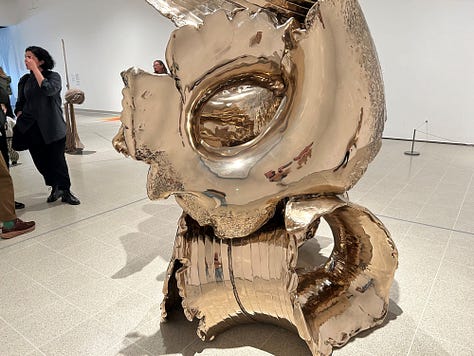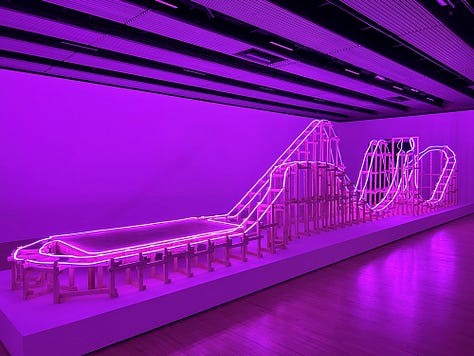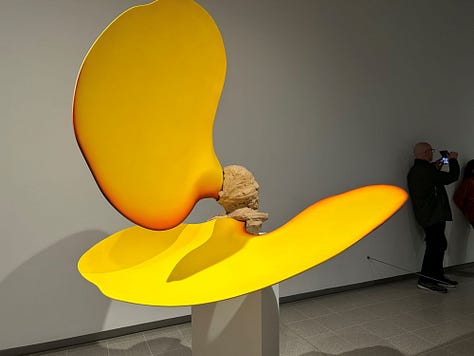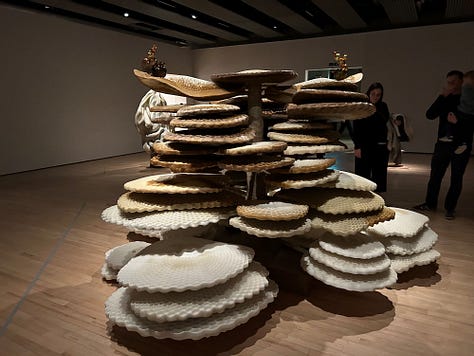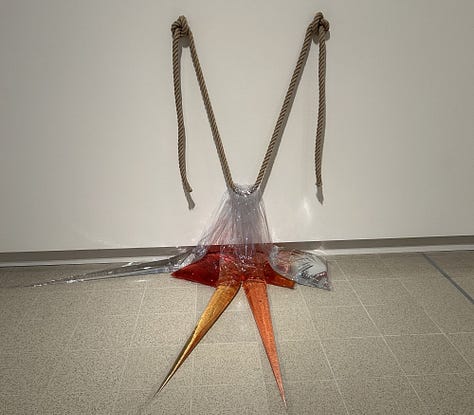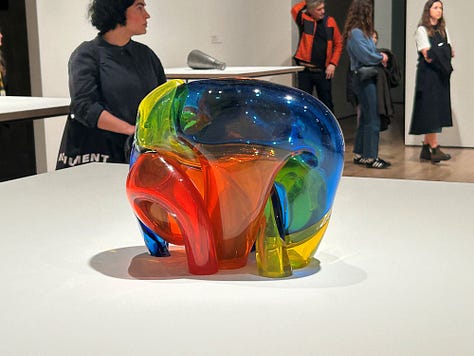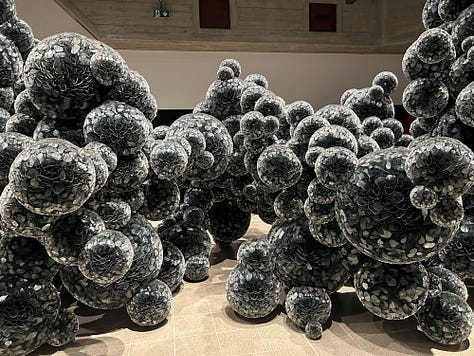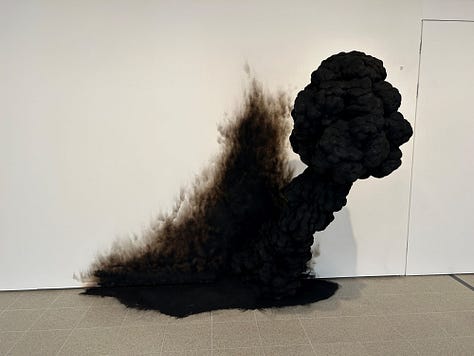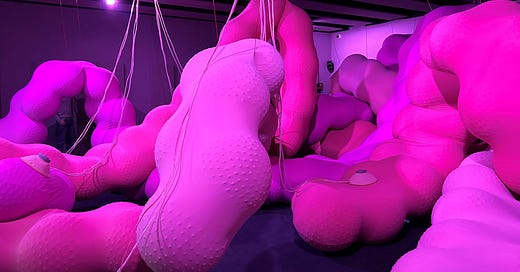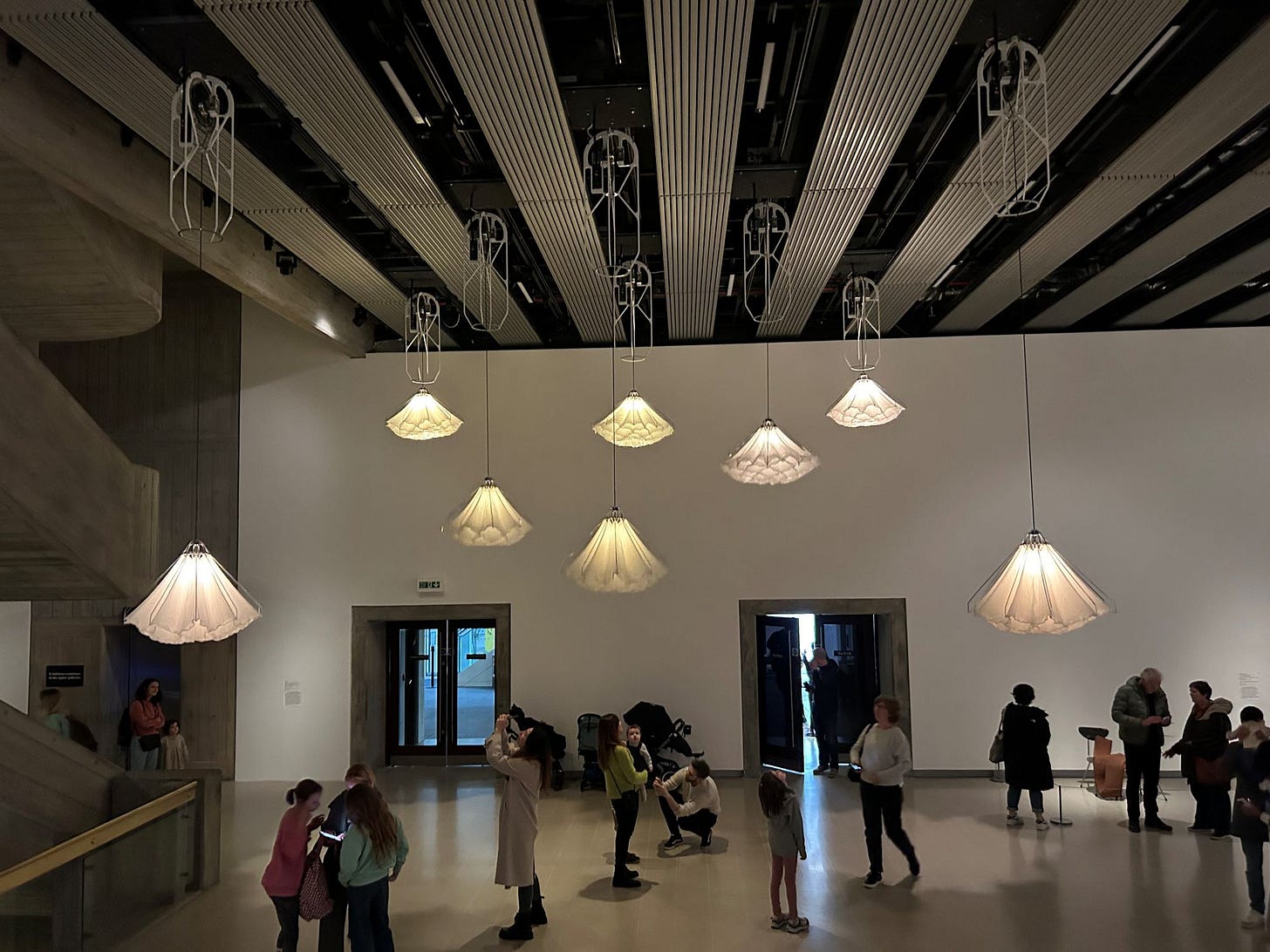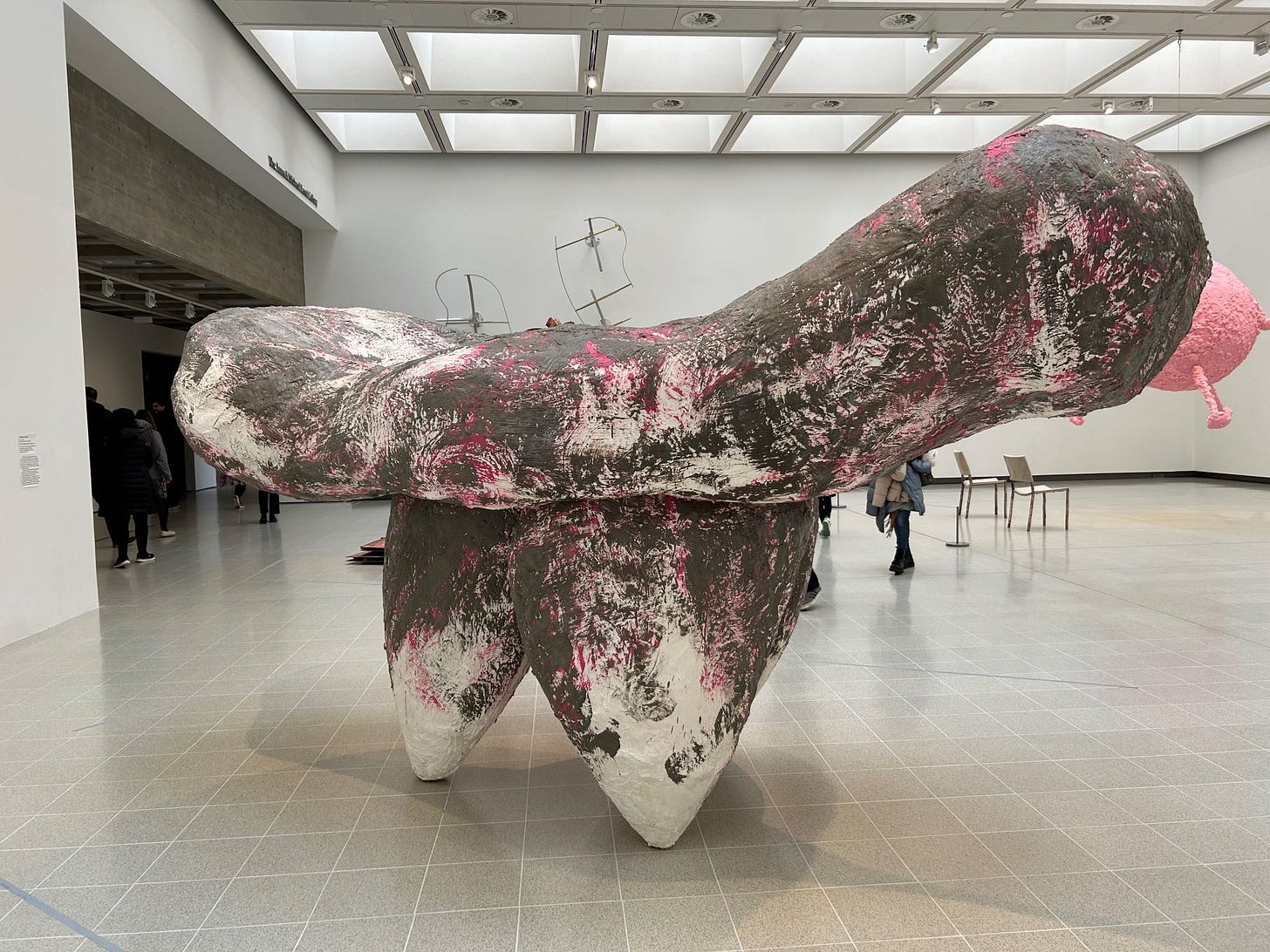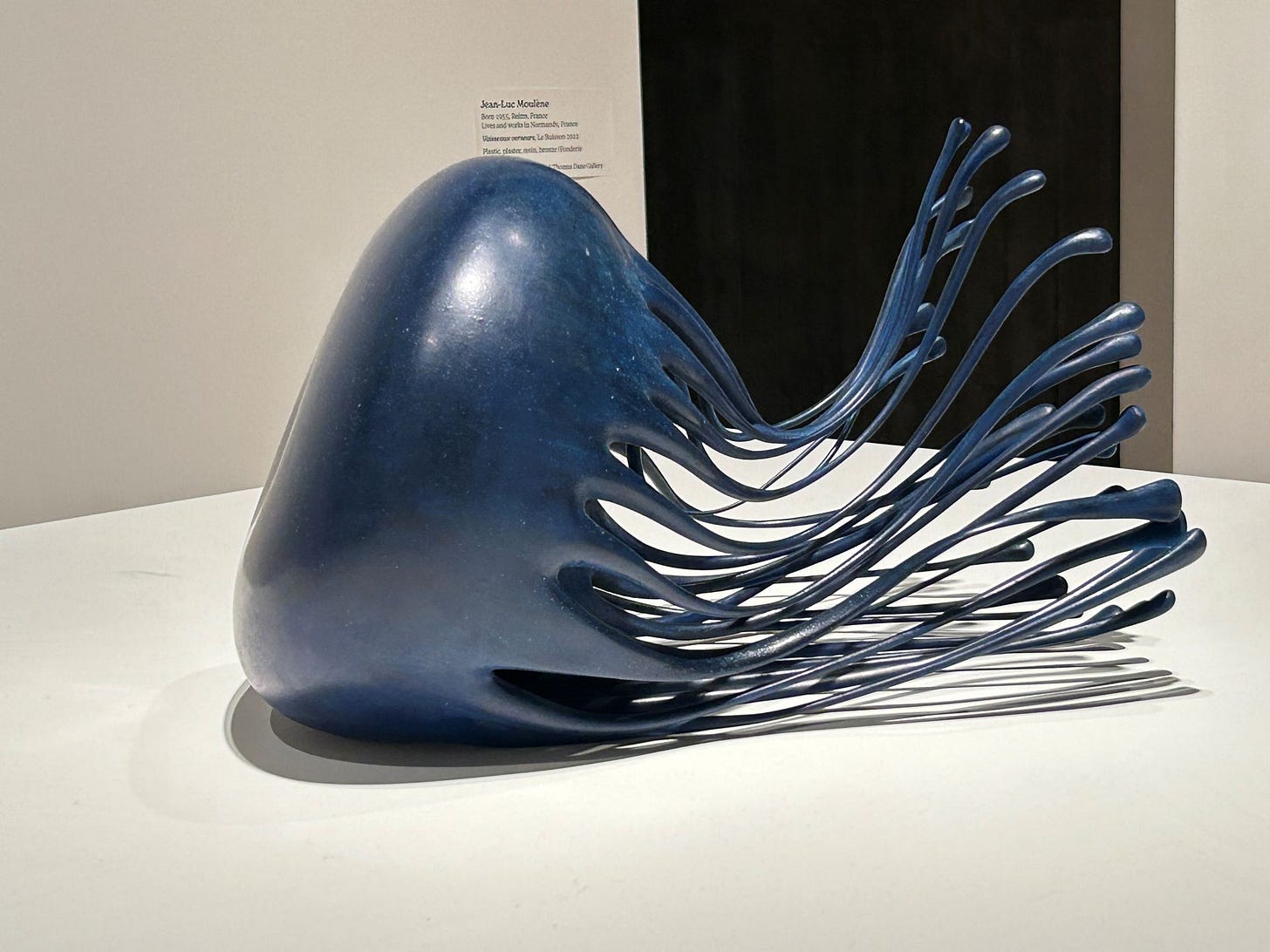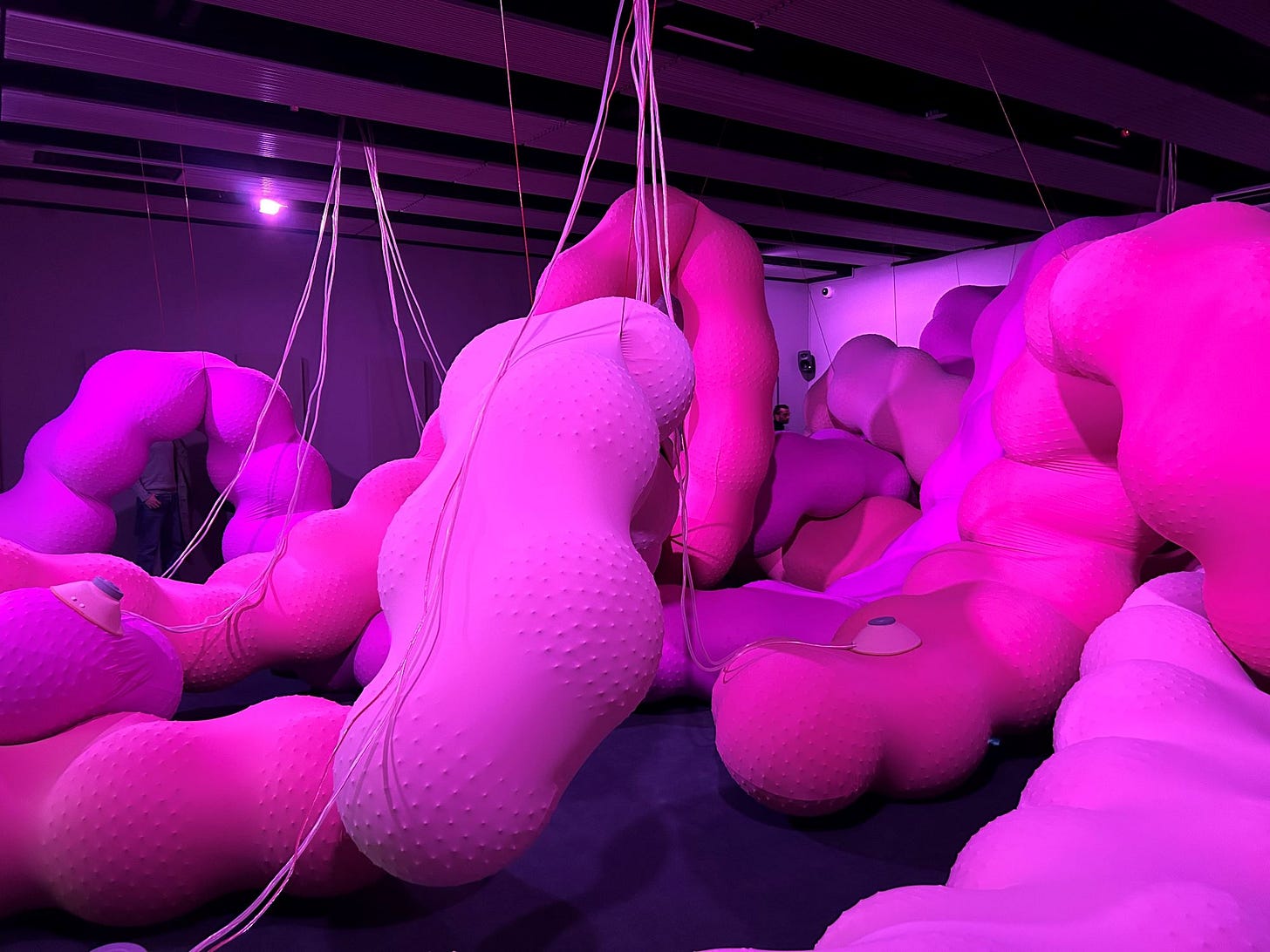Review: When Forms Come Alive exhibition at the Hayward Gallery
Beautiful, thought provoking and disturbing – this exhibition at London’s Southbank Centre explores life and movement through sculpture.
Sculpture – static, solid, rigid – that flows, that oozes, that conveys movement, growth, life. This is what you get from the Hayward Gallery’s spring exhibition, When Forms Come Alive.
The exhibition features works from 21 artists, spanning more than 60 years of contemporary sculpture. Walking into the exhibition space, you’re immediately confronted with my favourite piece in the whole show.
Dutch duo DRIFT’s Shylight consists of silk parachutes which descend from metal cages attached to the ceiling, before rising up again, lighting up and opening and closing as they rise and fall like giant alien flowers taking part in a living ballet. The installation’s position means it can be engaged with on different levels as you move around the space, taking you from underneath them up to the same level as the cages.
I wasn’t the only one for whom this work was a favourite. While I was watching this balletic performance a young child with a mop of curly hair was standing underneath the falling flowers. He cheered as they came down, lighting up as they fell. It was lovely to see and shows that art really is for everyone.
Michel Blazy’s Bouquet Final is a scaffolding structure that contains whorls of bath foam to create objects that look alive. They move almost imperceptibly in the still air of the gallery, changing all the time. They also appear to die – becoming smaller all the time as the foam pops out of existence; a poignant comment on the transient nature of life.
Many of the forms recall the natural world. Industrial materials that somehow bring to mind the soft contours of some giant fleshy animal; brittle glass sculptures that resemble huge claws or delicate butterfly wings. Elsewhere, glass and resin morphs into insect carapace or a jellyfish.
Made from mylar, a type of polyester resin, Tara Donovan’s Untitled (Mylar) fills an entire room. The shining, silver spheres proliferate and seem to multiply. They remind me of a biological structure such as a coral reef, fluttering and swaying in the watery depths.
These sculptures are slightly unsettling, a completely different experience from the more fun and light-hearted feeling evoked by the dancing parachutes. It’s like a wildlife version of the ‘uncanny valley’ where the closer a representation of a human being is to reality, the more eerie that object becomes. The works just about represent living organisms closely enough to evoke that feeling of uncanniness.
Some of the most disconcerting pieces bring to mind viscera – maybe human, maybe some huge unknown animal. Eva Fàbregas’s Pumping is a sprawling mass of pink latex and inflatable balls that twist and knot into and around each other. It resembles nothing so much as intestines. Occupying a room of its own, so make sure you don’t miss it, it’s accompanied by a pumping (what else?) dance soundtrack.
But the piece is also inviting. I’m tempted to climb through the intertwined tunnels – it’s almost like a neon pink playground. I wouldn’t of course; it’s understandably strictly forbidden to touch any of the artworks. But this isn’t the only one that cries out for a more tactile encounter.
The works evoke ebb and flow, the ever-changing nature of the world, in largely static forms. There’s something undeniably feminine about the exhibition – maybe it’s in the unashamed bodily references – and there are many female artists represented here. From elegantly balletic to messily visceral, it’s a triumph of an exhibition.
When Forms Come Alive is currently on at the Hayward Gallery, part of London’s Southbank Centre. It runs till 6 May with tickets costing from £18.
